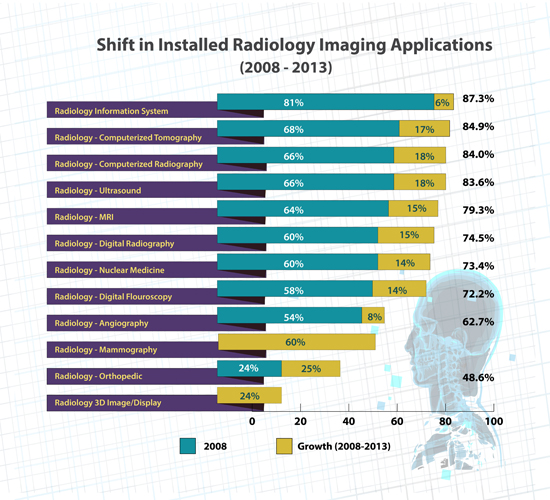Benchmarks: Imaging IT sees a sea change
A fundamental question needs to be asked when examining the market for radiology information systems and, especially, picture archiving and communication systems: what does PACS even refer to these days?
"Is this just radiology PACS anymore?" asks John Hoyt, executive vice president of HIMSS Analytics. Or rather, he wonders, do we need to start thinking much more broadly about the enterprise of diagnostic imaging – a more general-purpose "image PACS?"
After all, there's also "pathology PACS and there's cardiology PACS and there are other images that are not necessarily DICOM-compliant," he says, referring to Digital Imaging and Communications in Medicine, a standard for storing and transmitting image information, first developed by National Electrical Manufacturers Association and the American College of Radiology.
"The industry is undergoing a shift as far as broadening what goes into digital image storing," says Hoyt.

That means big challenges, going forward.
"We're taking more and more pictures," he says. For instance, "it's probably, in many states, required now for abuse victims in the ED to have photos. Of course dermatology clinics have been (taking photos) for years. And all of our gastroenterological exams, those colonoscopies, those are a bunch of photos."
That proliferation of images, of all sizes and types, "sort of drives the health information management people crazy," says Hoyt. "You've got all this electronic medical record but we have all these non-DICOM images that are popping up all over the place."
And while HIMSS Analytics doesn't necessitate that capability for hospitals seeking to attain Stage 7 on its EMRAM scale, "We really should require the hospitals to index those images," he says. "If we were to say, 'Show me all the pictures you have for Mary Jones, who's come into your emergency room seven times in the last two years,' could they do that?"
























